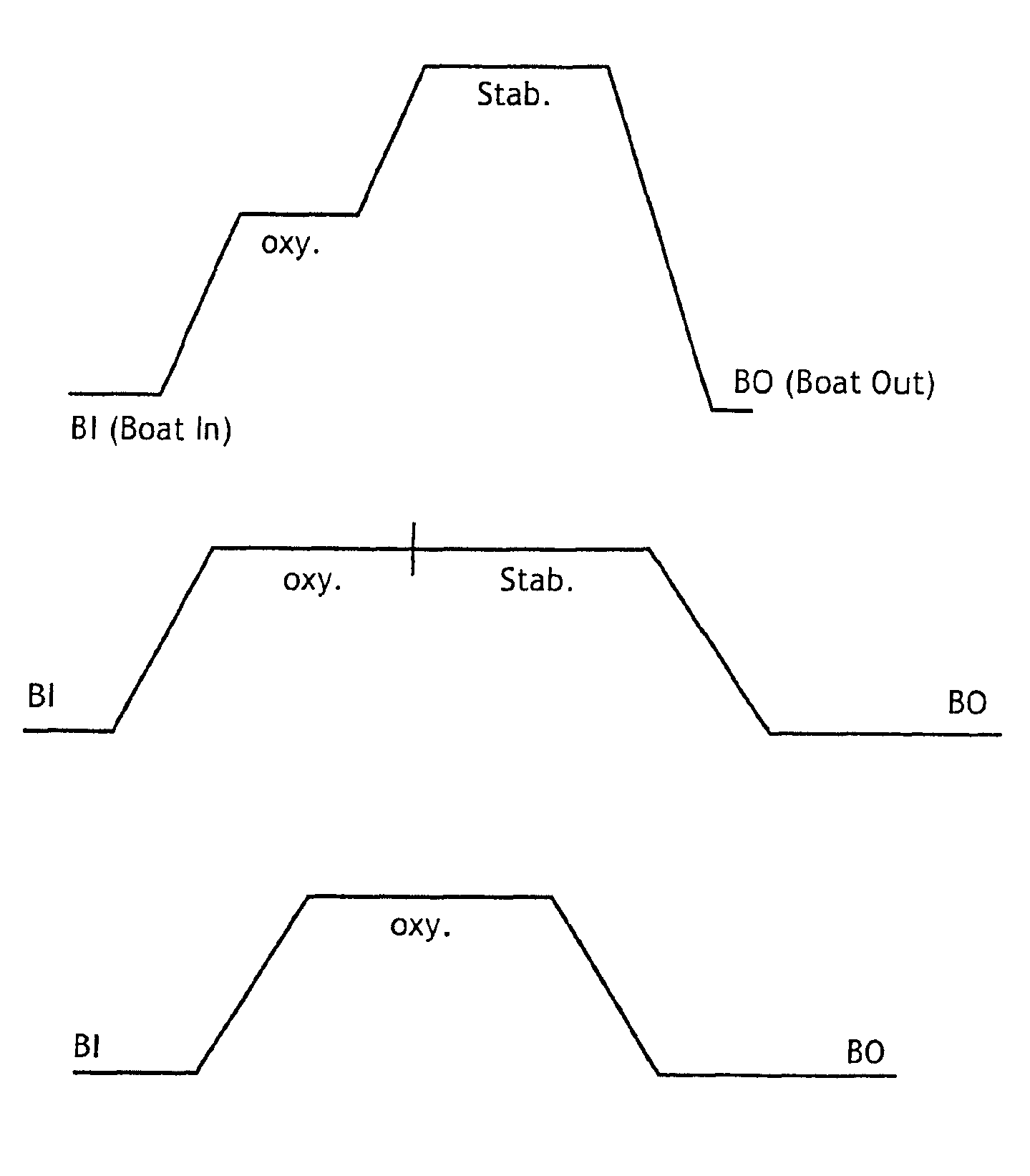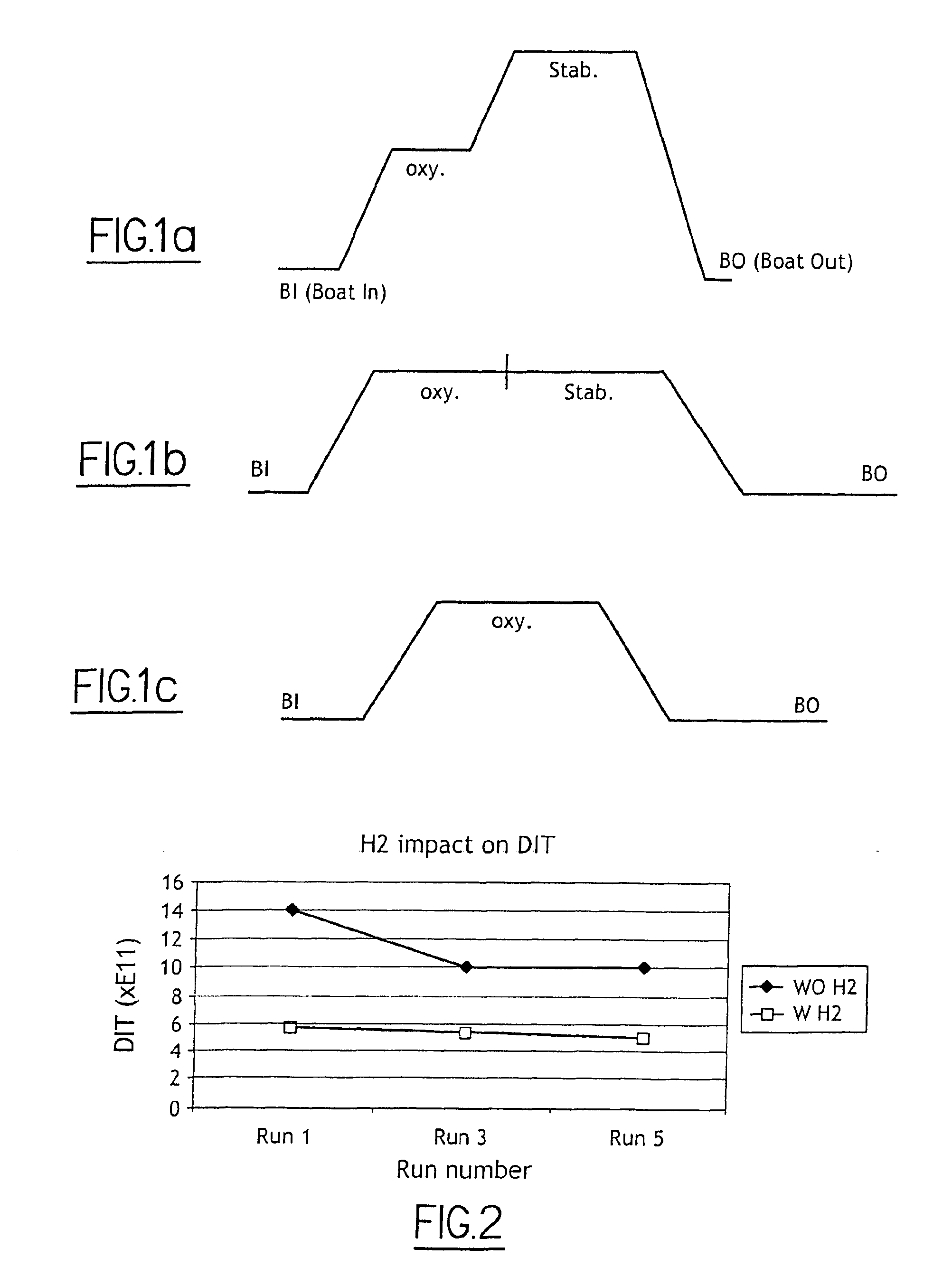Method for reducing the trap density in a semiconductor wafer
a technology of trap density and semiconductor wafer, which is applied in the direction of semiconductor/solid-state device manufacturing, basic electric elements, electric devices, etc., can solve the problems of increasing the cost of fga treatment, adding another long treatment at the end of the manufacturing process of the wafer, and not being effective in fga treatment. to achieve the effect of reducing the trap density
- Summary
- Abstract
- Description
- Claims
- Application Information
AI Technical Summary
Benefits of technology
Problems solved by technology
Method used
Image
Examples
examples
[0051]FIG. 2 illustrates results of experiments conducted by the inventors on SOI wafers fabricated by a method based on the SMART-CUT® technology. This figure shows the value of the DIT measured on groups of otherwise identical wafers, labelled respectively to “run1”, “run2” and “run3”, that have been processed under the same conditions, except for the presence and absence of H2 and except for different boat-out, or final, temperatures:
[0052] run1: with and without H2 at a boat-out temperature of 450° C.,
[0053] run2: with and without H2 at a boat-out temperature of 600° C.,
[0054] run3: with and without H2 at a boat-out temperature of 750° C.
[0055] All runs included a starting phase followed by an oxidation phase at 950° C. and then by a stabilizing phase at a temperature of about 1100° C. The DIT measurements were carried out in the same manner for all runs.
[0056]FIG. 2 illustrates two curves, each curve defined by three points (a point for each group or “run”). The upper curv...
PUM
 Login to View More
Login to View More Abstract
Description
Claims
Application Information
 Login to View More
Login to View More - R&D
- Intellectual Property
- Life Sciences
- Materials
- Tech Scout
- Unparalleled Data Quality
- Higher Quality Content
- 60% Fewer Hallucinations
Browse by: Latest US Patents, China's latest patents, Technical Efficacy Thesaurus, Application Domain, Technology Topic, Popular Technical Reports.
© 2025 PatSnap. All rights reserved.Legal|Privacy policy|Modern Slavery Act Transparency Statement|Sitemap|About US| Contact US: help@patsnap.com


